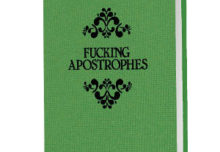Every sentence needs a subject and a verb – and the stronger your verb, the stronger your sentence.
Instead of writing:
I really do not like boiled asparagus.
write:
I loathe boiled asparagus.
A single strong word is always better than several weaker ones. Instead of writing:
I walked gingerly.
write:
I tiptoed.
Be specific
Specific words are strong because they help build a vivid picture in the reader’s mind.
Think of the difference between slurp and drink, or strut and walk.
You never want to exaggerate – but if someone slurps or struts, then say so. It’s far better than writing: drinks loudly and messily or walks in a cocky manner.
Be straightforward
Strong verbs are also straightforward.
Instead of writing:
Get an eyeful of the action at the outdoor cinema.
write:
Watch the action at the outdoor cinema.
Whoever wrote Get an eyeful was probably trying to be creative – but it doesn’t improve the writing. It simply makes it longer.
Now, if you come up with a turn of phrase that’s genuinely inspired – ie it makes the reader see things in a different way, or laugh out loud, or evokes a strong image – then by all means use it. If not, however, then you’re better off using a simple verb that says exactly what it needs to.
Avoid saying “not”
If the word not appears in the middle of a verb phrase, then think about whether you can say the same thing in less words.
For example, instead of writing:
Dan did not keep walking.
write:
Dan stopped walking.
or even:
Dan halted.
Good communication is ultimately about clarity and word choice – and choosing the right verb is crucial.
Learn more by enrolling in the Writing Essentials online course
Study at your own pace, whenever and wherever you want.
Taught by a former newspaper editor and journalist, this course is suited for anyone who wants to improve their writing – whether it’s for marketing, journalism, blogging or PR. It’s also ideal for those who want to improve their general writing skills.
It teaches all the basics, including:
- how to write in the active voice
- how to use positive language
- using the right tone of voice and style
- cutting copy
- making your intros stronger
- writing in plain English
- how to write in the inverted pyramid style
- top 10 news criteria (what makes a story interesting)
- frontloading content
- grammar and punctuation
- proofreading tips
- writing great headlines.
Fun and practical, this course is filled with plenty of exercises to allow you to put theory into practice.
Find out more and enrol



